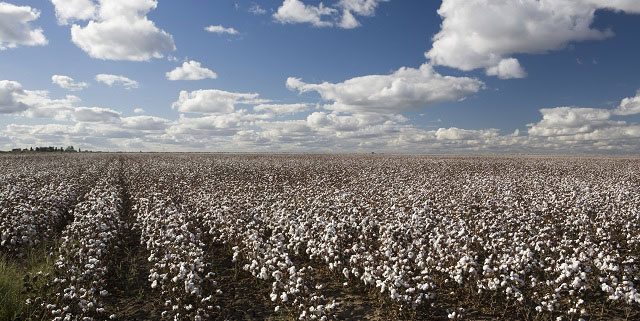However, the increase in net worth was also a result of rising home prices. Housing prices increased 13% last year, and with 65% of Americans owning or making payments to own homes, higher housing prices increase the wealth of a higher percentage of consumers. Prior to the onset of the financial crisis, the middle class was able to increase spending without improvement in wages since higher home prices allowed consumers to borrow increasing amounts against their homes. This was relevant to consumer spending, including product categories like apparel, since this borrowing facilitated increased consumer spending despite the absence of significant increases in wages.
Since the financial crisis, household debt as a percentage of disposable income has fallen, indicating that consumers have been paying down debt rather than increasing borrowing. While this may be encouraging since it suggests a more stable economic environment, the weak labor market has not allowed for real gains in income and the decline in borrowing also suggests difficulty for consumer spending to accelerate without significant improvement in the labor market.
In the latest Department of Commerce consumer spending figures for January, overall spending was estimated to have risen 0.3% month-over-month; apparel spending was estimated to have fallen 1.1%. Over the past twelve months, total spending increased eleven times, while apparel spending increased only five times. Year-over-year, overall spending was 2.2% higher in January; apparel spending was up only 0.5%.
[pdfcharts]
[pdf pdflink=”/wp-content/uploads/2014/03/2014-03-Executive-Cotton-Update-2.pdf”]U.S. Macroeconomic Indicators & Cotton Prices[/pdf]
[pdf pdflink=”/wp-content/uploads/2014/03/2014-03-Executive-Cotton-Update-3.pdf”]Daily Cotton Price & Currency Data [/pdf]
[pdf pdflink=”/wp-content/uploads/2014/03/2014-03-Executive-Cotton-Update-4.pdf”]GPD Growth & U.S. Interest Rates [/pdf]
[pdf pdflink=”/wp-content/uploads/2014/03/2014-03-Executive-Cotton-Update-5.pdf”]ISM Indices [/pdf]
[pdf pdflink=”/wp-content/uploads/2014/03/2014-03-Executive-Cotton-Update-6.pdf”]Leading Indicators & Consumer Confidence [/pdf]
[pdf pdflink=”/wp-content/uploads/2014/03/2014-03-Executive-Cotton-Update-7.pdf”]Employment [/pdf]
[pdf pdflink=”/wp-content/uploads/2014/03/2014-03-Executive-Cotton-Update-8.pdf”]Housing [/pdf]
[pdf pdflink=”/wp-content/uploads/2014/03/2014-03-Executive-Cotton-Update-9.pdf”]Industrial Production Inventory/Shipments [/pdf]
[pdf pdflink=”/wp-content/uploads/2014/03/2014-03-Executive-Cotton-Update-10.pdf”]U.S. Yarn Exports [/pdf]
[pdf pdflink=”/wp-content/uploads/2014/03/2014-03-Executive-Cotton-Update-11.pdf”]Consumer Spending[/pdf]
[pdf pdflink=”/wp-content/uploads/2014/03/2014-03-Executive-Cotton-Update-12.pdf”]Industrial Production & Inventory/Shipments [/pdf]
[pdf pdflink=”/wp-content/uploads/2014/03/2014-03-Executive-Cotton-Update-13.pdf”]Trade Weighted Index & Asian Currencies[/pdf]
[pdf pdflink=”/wp-content/uploads/2014/03/2014-03-Executive-Cotton-Update-14.pdf”] Currencies vs. U.S. Dollar [/pdf]
[pdf pdflink=”/wp-content/uploads/2014/03/2014-03-Executive-Cotton-Update-15.pdf”]U.S. Balance Sheet & Fiber Prices [/pdf][/pdfcharts]
